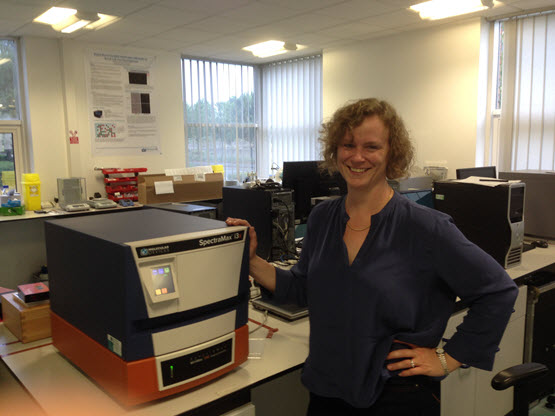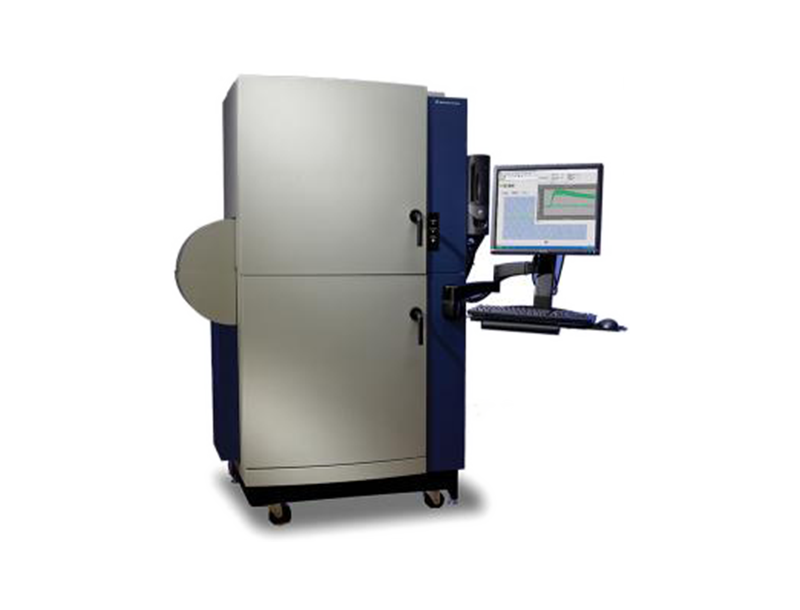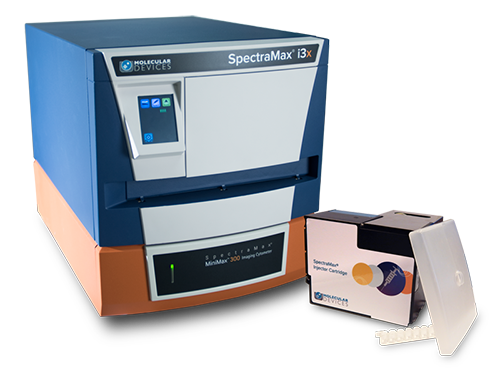University College London uses the FLIPR Tetra System
to develop personalized medicines
“My research is strongly focused on enhancing our understanding of the molecular basis of
health and disease and my work focuses primarily on elucidating the role of cell surface receptors in these processes”
Andrea Townsend-Nicholson

TEAM MEMBERS
Department of Structural and Molecular Biology
University College London
Professor: Andrea Townsend-Nicholson
The Challenge
Professor Andrea Townsend-Nicholson is interested in personalised medicine – helping develop bespoke therapeutics for individuals.
Research in Andrea’s group focuses primarily on understanding how extracellular signals are transduced into intracellular responses. In particular, elucidating the role of cell surface receptors in these processes. They use an integrated approach of high-performance computing and experimental work to develop drugs that can act at specific cell surface receptors. This approach allows them to develop computer models of the structure of the target receptor for each patient, including any mutations or genome variations in their receptor protein sequence. They can test the compounds they develop both in silico and experimentally. The idea is to reduce the cost and reduce the time-to-clinic for each novel drug by doing most of the heavy lifting computationally and then checking experimentally to make sure that everything works as expected. They are currently developing an anti-obesity ‘thin pill’ using this method. The team are also interested in development of new technologies, particularly the use of tissue engineering to develop 3D biological architectures for therapeutic use.
For their investigation of cell surface receptors, the team needed a high-throughput solution for monitoring calcium mobilization by GPCRs and ion channels, as well as membrane potential changes associated with ion channel activation and ion transporter proteins.
The Solution
The team run calcium signalling and membrane potential assays using the FLIPR® Tetra High-Throughput Cellular Screening System. The FLIPR system is also used to run cAMP assays using chimaeric G protein subunits that recognise Gi or Gs-coupled receptors but activate PLCß, instead of interacting with adenylyl cyclase.
As an alternative way of measuring cAMP, hTR-FRET assays of cAMP are performed by the group on a SpectraMax i3x Multi-Mode Microplate Reader. This system is also used to quantify dsDNA for NGS Illumina sequencing, using the SpectraMax Quant dsDNA Assay Kits. Furthermore, these kits are used for teaching medical students and molecular biosciences students as part of the Human Microbiome and Earth Microbiome projects.
Products Used

|

|
Quickly transform your creative concepts into real-time kinetic cellular assays for identifying early leads against GPCRs and ion channel targets. The industry-renowned FLIPR Tetra System is fast, reliable, and remarkably easy to configure. The system is optimized for use with both fluorescence and luminescence, and adapts readily to your assay format with user-changeable 96-, 384-, and 1536-well heads.
The SpectraMax i3x Multi-Mode Microplate Reader measures absorbance, fluorescence, and luminescence with available upgrades including western blot, cell imaging, and fast kinetics with injectors plus additional detection modes. User-configurable detection modules provide the ability for exploring cellular pathways and protein expression.
The Results
These solutions have underpinned advances not only in Andrea’s research, but also in her teaching work, providing a means for young researchers to incorporate high-throughput assays in their work.
Andrea’s group were also involved with the validation of the FLIPR Potassium Assay Kit. Using their FLIPR Tetra system, they demonstrated that these kits could be used to measure the functional activity of the human KCC2 cation-chloride cotransporter using a homogeneous, no-wash protocol. Compared to traditional dyes such as BTC-AM, they showed that the simplified protocol and robust assay quality, in combination with the high-throughput capability of the FLIPR Tetra System, provides a powerful solution to screen for modulators of the hKCC2 cotransporter.
“The FLIPR potassium assay kit displayed a large assay window and excellent reproducibility”
Andrea Townsend-Nicholson
Related Resources
Application NoteDevelopment of a cell-based potassium-chloride transporter assay using the FLIPR Potassium Assay Kit
Download application note
Find out more about the group

